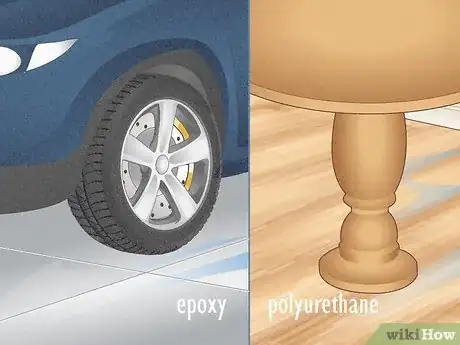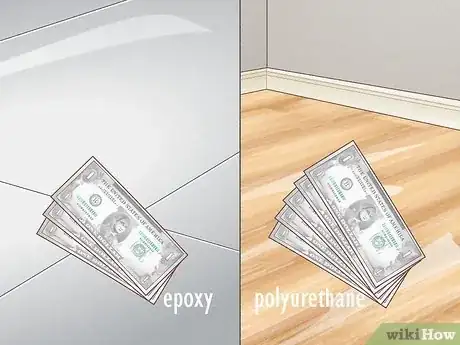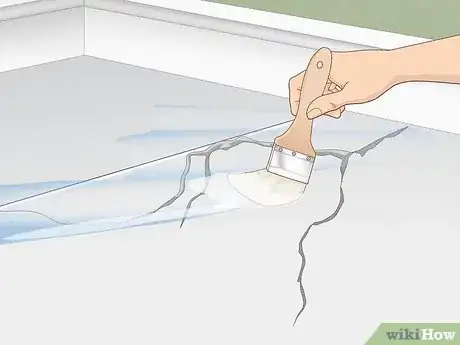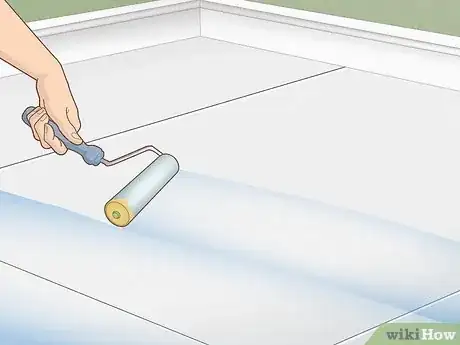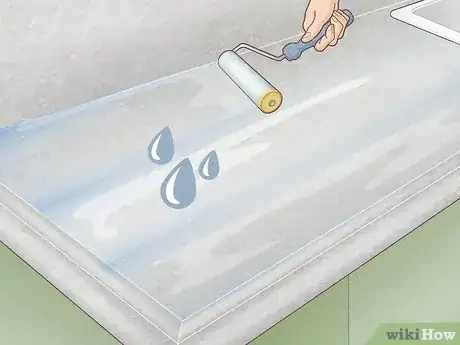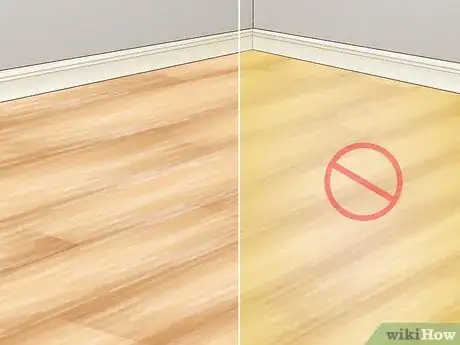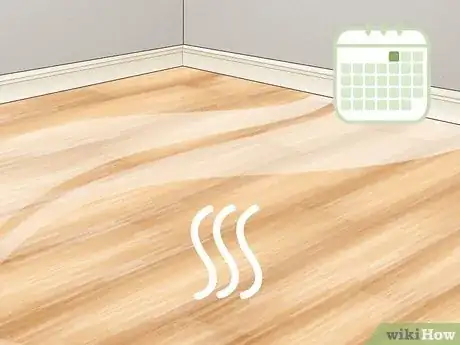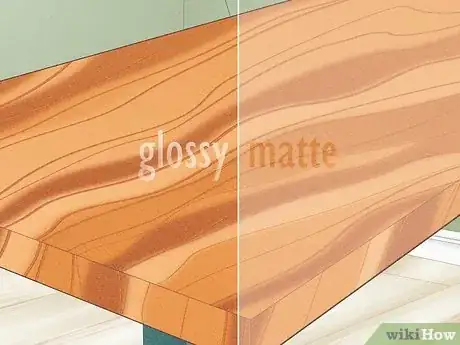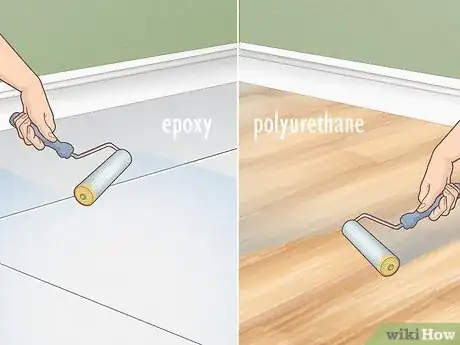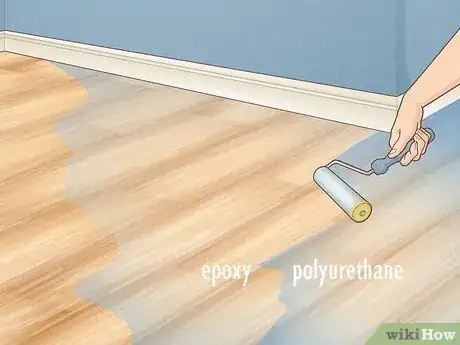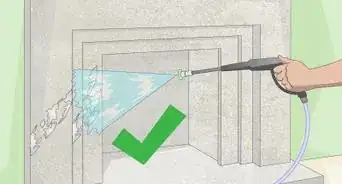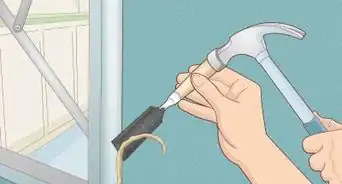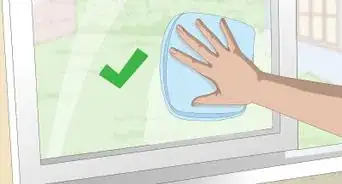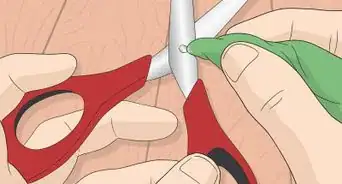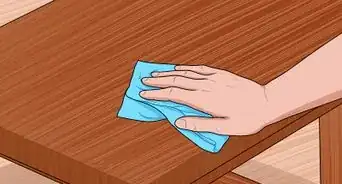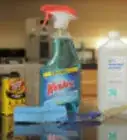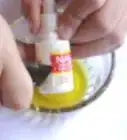This article was co-authored by Sam Hubbard and by wikiHow staff writer, Devin McSween. Sam Hubbard is a Professional Carpenter and the Owner of Hubbard Carpentry and Remodeling. He has over 19 years of experience in the industry. Sam specializes in kitchen remodels, home woodworking, cabinetry, and handyman services.
There are 7 references cited in this article, which can be found at the bottom of the page.
This article has been viewed 1,018 times.
When it comes time to finishing and protecting your project, it’s down to 2 coatings: epoxy or polyurethane. But wait, are these 2 clear coatings really different? You might be tempted to just grab the first one in reach, but these coatings do different things! In this article, we’ll go over the main differences between epoxy and polyurethane. Whether you’re finishing a floor or a piece of furniture, it’s helpful to know which coating works best for your specific project (and also, how you can use them together, too!). So, we’ll also tell you about the benefits of using each one to help you decide which one to use.
Things You Should Know
- Epoxy is harder and stronger while polyurethane is more flexible, resistant to chemicals and extreme temperatures, and longer-lasting.
- Epoxy’s main benefits are its ability to fill in uneven surfaces and make strong bonds with concrete.
- Polyurethane is unique because it doesn’t yellow under sunlight and cures fully in about 1 day.
Steps
Comparing Epoxy and Polyurethane
-
1Epoxy is physically stronger while polyurethane is flexible. While both epoxy and polyurethane are strong, durable coatings, epoxy is harder and more resistant to heavy objects and forces. On the other hand, polyurethane is super flexible and withstands impacts and scratches better. Epoxy is more rigid, which makes it more susceptible to cracks from falling objects.[1]
- When applied to the floor, epoxy’s strength makes it a better option for areas that get a lot of heavy traffic from cars and equipment, such as garages.
- Polyurethane’s flexibility means it’s great to apply to floors that are prone to impacts and scratches, such as outdoor and warehouse floors.
-
2Polyurethane is more chemical and temperature resistant than epoxy. Generally, polyurethane’s greater chemical resistance makes it the better choice for protecting flooring and other substances exposed to foods and harsh cleaners. Compared to epoxy, it can also better withstand extremely hot and cold temperatures.[2]
- For this reason, polyurethane is often the coating used in hospitals, food manufacturing plants, breweries, and kitchen floors.
Advertisement -
3Polyurethane might cost more, but it usually lasts longer than epoxy. Cost is always an important factor when choosing between these 2 coatings. Epoxy is typically a bit cheaper than polyurethane. However, polyurethane holds up a lot longer before it needs to be replaced, often lasting over 10 years compared to epoxy’s 2 years.[3]
- Typically, polyurethane costs around $5 – $7 per square foot/meter while epoxy costs about $3 to $6 per square foot/meter.[4]
Epoxy Benefits
-
1Epoxy is thick, easily filling in cracks and uneven surfaces. One of the greatest benefits of using epoxy is its consistency and thickness. It levels floors and other surfaces that aren’t perfectly flat without requiring you to do much work! Epoxy’s thickness also makes it great for smoothing over dents and blemishes, hardening and protecting surfaces from further damage.[5]
- Unlike epoxy, polyurethane is pretty thin and isn’t as good at filling in cracks and unevenness.
-
2Epoxy creates a strong bond with concrete. Both epoxy and polyurethane are commonly used to cover and protect concrete floors. If that’s something you’re looking to do, epoxy is by far the better choice. Its thickness allows it to stick to concrete better, creating a stronger, more durable, and more protective seal.[6]
- However, epoxy’s bond depends on how well the concrete is prepared. For a great bond, polish the concrete thoroughly. Sweep and clean the concrete to remove dirt and debris. Then, give it a good sanding with a diamond grinder or an abrasive shot blaster.
-
3Epoxy is more moisture resistant, making it easier to apply. When installing epoxy, you’re less likely to encounter sealing and cosmetic issues compared to polyurethane. While epoxy doesn’t necessarily love humidity, it will still come out hard and smooth if applied on a humid day. This makes it the better choice when you can’t avoid damp, moist conditions.[7]
- If polyurethane is applied with humidity present, it can easily develop unsightly bumps. It also won’t dry as quickly.
Polyurethane Benefits
-
1Polyurethane doesn’t turn yellow over time. Unlike epoxy, polyurethane is UV resistant. This means that it isn’t as affected by sunlight and stays clear and glossy as the years pass. Epoxy, on the other hand, tends to yellow quickly when it’s exposed to light.[8]
- This usually makes polyurethane the better choice for outdoor projects.
-
2Polyurethane cures quickly, usually taking as little as 1 day. Another great benefit of polyurethane is its short cure time, or time it takes to fully set and harden, even when you apply multiple coats. This is a better option if you’re in a time crunch or just want to get your surface finished ASAP![9]
- Epoxy has a longer cure time, often taking 7 days to dry and harden fully.
-
3Polyurethane comes in more finishes, like matte and glossy. While protection is probably your main concern, looks are important too. When it comes to choosing a finish for your surface, polyurethane provides more options. You have your pick of matte, semi-gloss, and high-gloss finishes, which epoxy doesn’t provide.[10]
Which coating is the best to use?
-
1If you want max strength, choose epoxy; for a flexible, more resilient seal, go with polyurethane. There are tons of things to factor in when making your decision. Think about the durability, cure time, and the finish you want. If you want a hard and strong coating, specifically for a concrete surface like your garage or driveway, epoxy is typically the best choice. But, if you want a more resistant, long-lasting, and aesthetically-pleasing coating, polyurethane is for you (which might make it the better choice for outdoor and wooden projects).[11]
-
2Or, combine epoxy and polyurethane to get the best of both worlds. Epoxy and polyurethane often work best when used together! Epoxy is typically used as a base coat, evening out the surface and protecting it from heavy objects. Polyurethane is then added on top, making the surface more resistant to impacts and scratches and leaving it with a beautiful shine.[12]
Expert Q&A
-
QuestionWhy is my polyurethane finish rough?
 Sam HubbardSam Hubbard is a Professional Carpenter and the Owner of Hubbard Carpentry and Remodeling. He has over 19 years of experience in the industry. Sam specializes in kitchen remodels, home woodworking, cabinetry, and handyman services.
Sam HubbardSam Hubbard is a Professional Carpenter and the Owner of Hubbard Carpentry and Remodeling. He has over 19 years of experience in the industry. Sam specializes in kitchen remodels, home woodworking, cabinetry, and handyman services.
Professional Carpenter You're probably missing one or more steps for a nice finish. Always start by sanding the surface with 180 grit. Wipe it down with a tack cloth to remove dust, then apply three coats of polyurethane with a brush. Lightly sand between coats with #00 steel wool, followed by a wipe down with a tack cloth. After the final coat, use a piece of cardboard instead of sandpaper to buff the surface.
You're probably missing one or more steps for a nice finish. Always start by sanding the surface with 180 grit. Wipe it down with a tack cloth to remove dust, then apply three coats of polyurethane with a brush. Lightly sand between coats with #00 steel wool, followed by a wipe down with a tack cloth. After the final coat, use a piece of cardboard instead of sandpaper to buff the surface.
References
- ↑ https://www.blackbearconcrete.com/epoxy-vs-urethane-blog/
- ↑ https://www.featureflooring.com/blog/which-flooring-solution-is-better-epoxy-or-urethane/
- ↑ https://www.featureflooring.com/blog/which-flooring-solution-is-better-epoxy-or-urethane/
- ↑ https://www.bestgaragefloorcoating.com/garage-floor-coating-cost-and-other-considerations/
- ↑ https://liquidfloors.com/blog/epoxy-or-polyurethane
- ↑ https://dex-o-tex.com/epoxy-vs-urethane-flooring-solutions
- ↑ https://learncoatings.com/what-are-the-differences-between-epoxy-and-polyurethane-floors/
- ↑ https://dex-o-tex.com/epoxy-vs-urethane-flooring-solutions
- ↑ https://learncoatings.com/what-are-the-differences-between-epoxy-and-polyurethane-floors/
